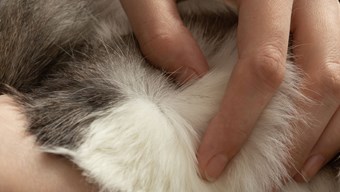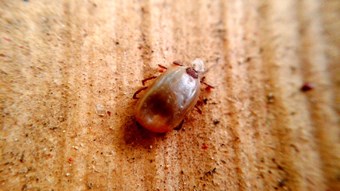Pet parasites
-

Why isn't my flea treatment working?
It can be frustrating, disappointing and expensive if you've bought flea products, only to find later that your pet still has fleas. Find out more.
-

Ringworm in dogs
This common fungal infection can be uncomfortable and itchy for your beloved household pet - learn about the symptoms and how to treat ringworm in dogs.
-

How preventative health care can save you money
The simplest way pet owners can give their pets a chance of a long, illness-free life is by keeping them as healthy as possible, and it will save money as well!
-

Hookworms in dogs
Hookworms are small and difficult to spot, in large enough numbers they can suck enough blood to cause serious anaemia, especially in puppies.
-

Coccidiosis in ferrets
Coccidiosis is caused by a single-celled parasite called Eimeria. While some ferrets show no signs, they may still carry the parasite. Find out more here.
-

Coccidiosis in rabbits
Learn about the prevention, treatment and early signs of Coccidiosis in rabbits. Vets4Pets offer professional pet health advice from qualified vets.
-

Hookworms And Your Cat
Hookworms are a small type of roundworm. Despite their small size, however, they can still cause problems in our cats, although less frequently than in dogs.
-

Protecting Your Dog From Ticks
Ticks are specialised parasites with large jaws that attach to pets & humans and feed on their blood. Click to find out more about tick prevention for dogs.
-

Ringworm in cats
This common fungal infection can be uncomfortable and itchy for your beloved household pet - learn about the symptoms and how to treat ringworm in cats.
-

How To Protect Dogs From Fleas
Itching to protect your dog from fleas? They're a common complaint in dogs causing irritation, disease & tapeworms. Find out more about dog flea protection.
-

Fleas And Your Puppy
Find out how to spot the symptoms of fleas on your puppy here. Find advice and treatments to ensure your pet does not suffer from these pests. Read online now.
-

Lungworm And Your Dog
Lungworm is a deadly parasite, which lives in slugs and snails. Keeping your dog protected against lungworm is a key part of keeping them happy and healthy.
-

Tapeworms And Your Dog
Tapeworms can cause a lot of distress in your pet dog. Find out the signs, symptoms and how to treat a tapeworm infection in your dog with our advice here.
-

Cat Mite Advice & Care
Learn about cat mites and mange in cats and which treatments are available to help alleviate your pet from the symptoms.
-

Tritrichmonas And Your Cat
Tritrichomonas is a microscopic parasite which lives in the large intestines of cats, where it causes diarrhoea. Find out more.
-

Cat Toxoplasmosis Advice & Care
Toxoplasmosis in cats is a common infection that you can catch from the poo of infected cats. Often harmless, it can in some cases cause serious problems.
-

Toxocara (Roundworms) And Your Cat
What are the causes for Roundworms in cats? How do you prevent and treat Roundworms for your cat? Read professional advice form our qualified vets today.
-

How To Protect Cats From Fleas
Is your cat scratching more frequently? Flea bites usually cause your pet to scratch and can lead to discomfort. Find out more about fleas and your cat.
-

Cat Ticks Advice & Care
Is your cat itching more frequently? Regular coat cleaning means cats are much less likely to pick up ticks than dogs. Find out more with Vets4Pets.
-

Dog Parasite Giardia Advice & Care
Learn about giardia in dogs which is the name of microscopic parasites that live in the small intestine of your pet and can cause numerous problems.
